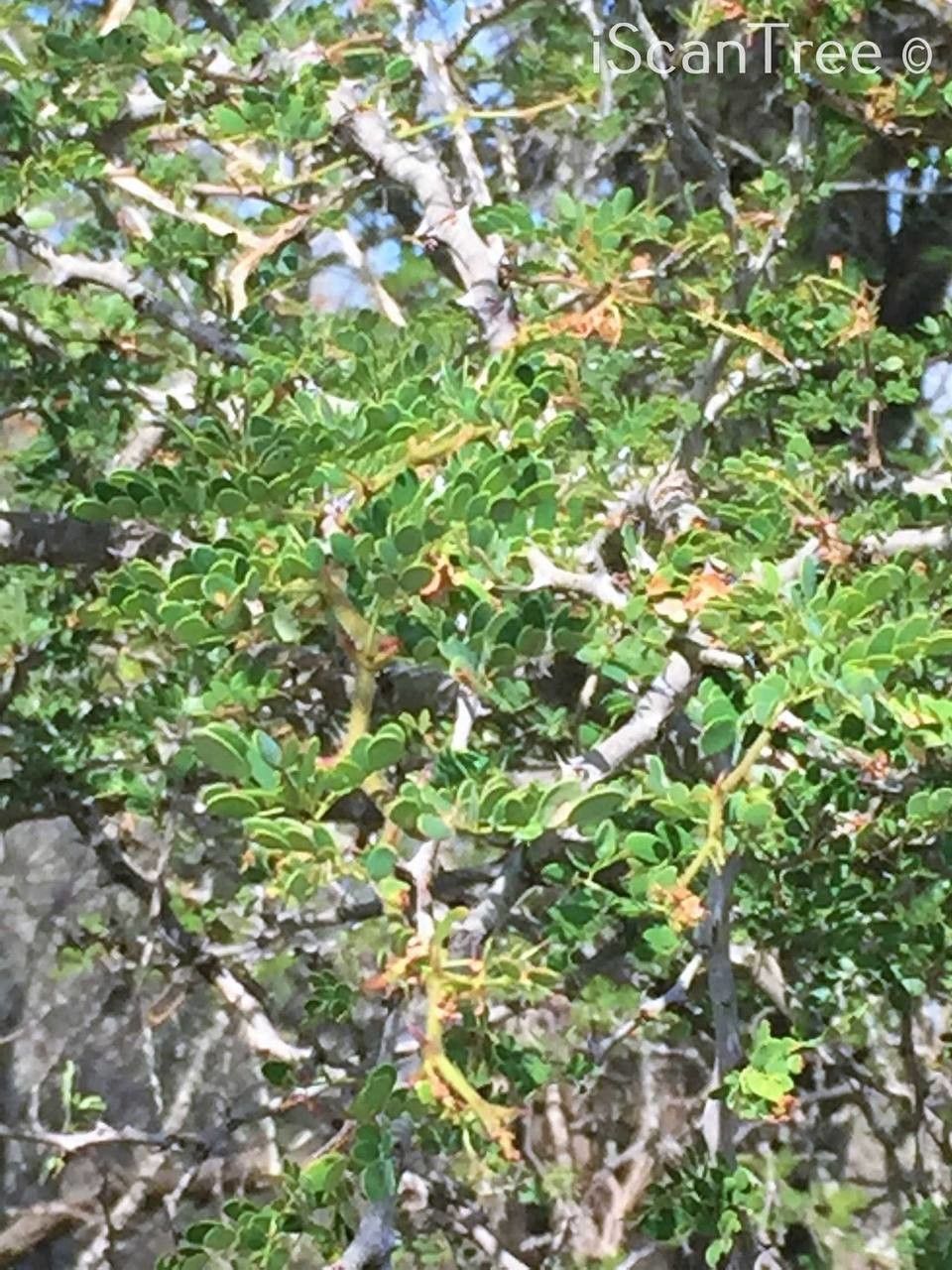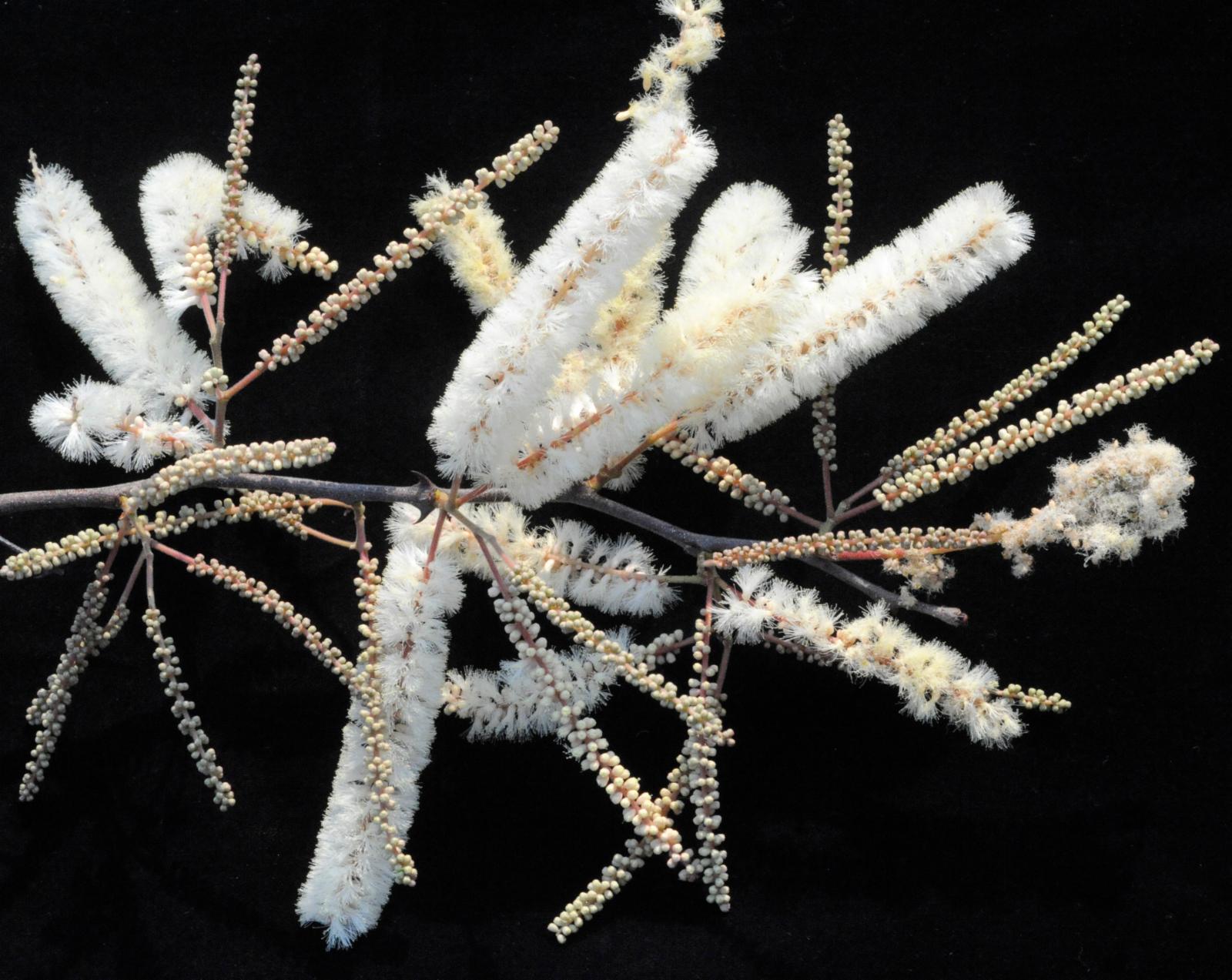Knob Thorn
senegalia nigrescens
Also known as: ["Knobthorn","Knob Acacia","Umbrella Thorn"]
Overview
A medium-sized, deciduous tree native to Africa, known for its distinctive knob-like thorns and feathery foliage.
Benefits & Perks
["wildlife attractant (bees, butterflies, birds)","drought tolerant","shade tolerant"]
Botanical Classification
| Phylum: | Magnoliophyta |
| Class: | Magnoliopsida |
| Order: | Fabales |
| Family: | Fabaceae |
| Genus: | Senegalia |
| Botanical Name: | Senegalia nigrescens |
Plant Characteristics
Basic Information
- Category: Trees
- Suitable Location: outdoor garden in open, sunny area
- Suitable For:
- Is Weed: No
- Allergenicity: low
Environmental Needs
- Climate: {"temperatureRange":"10–40°C"}
- Hardiness: {"zones":"9–11"}
- Misting: rarely required
- Drainage: Fast-draining to prevent root rot.
- Soil Type: Well-draining, sandy loam with some organic matter; mimics natural habitat.
Maintenance Level
- Maintenance Level: moderate
- Toughness Level: high
- Pruning Frequency: Annually in late winter or early spring before new growth begins.
- Pruning Intensity: Moderate; remove up to one-third of old growth if needed.
Care Details
Ideal Sunlight Coverage:
Full sun (6–8 hours of direct sunlight daily); tolerates partial shade but may become leggy.
Sunlight Tolerance Tips:
Acclimate gradually if moving from shade to sun; protect from intense midday sun in hot climates; ensure good air circulation to prevent sunburn.
Care Requirements
Care Difficulty
moderatemoderate
Sunlight
full sun
Rotate plant for even growth; use shade cloth in extreme heat; avoid placing near reflective surfaces that intensify sunlight.
Watering
every 2–3 weeks during dry periods, less frequently in winter
Water thoroughly until runoff, ensure excellent drainage, and avoid frequent shallow watering.
Soil
well-drained, sandy loam
pH: Slightly acidic to neutral (pH 6.0–7.0).
Use a mix of cactus soil and regular potting soil; avoid heavy clay soils; ensure pots have drainage holes.
Temperature
Thrives in warm conditions (20–30°C); tolerates brief periods below 10°C but prefers stable warmth.
Avoid sudden temperature fluctuations; protect from frost; ensure good air circulation in hot weather.
Fertilizing
every 3 months during active growth
Fertilize only during active growth; flush soil occasionally to prevent salt buildup; use a fertilizer with micronutrients.
Propagation
Methods
Stem cuttings or seed; stem cuttings are more common for home growers.
Step-by-Step Propagation Guide
- Take a 10–15 cm cutting.
- Remove lower leaves.
- Dip in rooting hormone.
- Plant in medium.
- Keep moist and warm.
Best Time: Spring or early summer when the plant is actively growing.
Environment
Warm (20–25°C), humid, and partially shaded environment with indirect light.
Medium
Well-draining mix of perlite and peat moss or cactus mix.
Hormone
Recommended to use rooting hormone for faster and more reliable rooting.
Timeline
Roots may develop in 4–8 weeks; establishment can take several months.
Tools Needed
Pruning shears, rooting hormone, small pots, well-draining medium.
Quick Tips
Use healthy, non-flowering stems; maintain consistent moisture; provide bottom heat if possible.
Pruning & Repotting
Pruning Guide
Method
Selective thinning and heading back to maintain form and health.
Pruning Plan
Shape the plant, remove dead or diseased wood, and encourage bushier growth.
Tools
Pruning shears, loppers (for larger branches), sterilizing solution.
Checklist
Sterilize tools; prune during dormancy; remove dead/diseased wood; shape evenly.
Repotting Guide
Best Season
Early spring before active growth starts.
Pot Size
Increase pot size by 2–5 cm in diameter; avoid oversized pots.
Method
Remove plant gently; trim roots if crowded; use fresh, well-draining soil; ensure drainage holes are clear.
Suggestions
Repot every 2–3 years or when roots fill the pot; beneficial for root health and growth.
Checklist
Check root bound status; prepare new pot with drainage; use fresh soil mix; water after repotting.
Advanced Care Tips
Watering Mastery
Watering Checklist
Check soil moisture before watering; water deeply; ensure drainage; adjust frequency by season.
How to Apply Water Properly
Water directly at the root zone, ensuring moisture penetrates deeply into the soil; allow excess water to drain freely; water in the morning to reduce evaporation and fungal risk.
Watering Schedule Tips
Water deeply once every 7–10 days during active growth in spring and summer; reduce frequency to every 3–4 weeks in fall and winter, allowing soil to dry completely between waterings.
Soil Improvement
Add perlite or coarse sand for drainage; incorporate compost for fertility; ensure aeration with organic matter.
Temperature Stress Management
Signs of Temperature Issues
Chlorosis or leaf drop in cold stress; wilting or scorching in excessive heat.
Cold Stress
Growth slows or halts; roots may rot in cold, wet soil; leaves may yellow or drop.
Solution: Move to a warmer location; protect roots with mulch; avoid overwatering in cold conditions.
Hot Stress
Leaves may scorch, wilt, or drop; growth may stagnate; soil may dry out too quickly.
Solution: Provide shade during peak heat; increase watering frequency; use mulch to retain soil moisture.
Fertilizing Guide
Fertilizing Checklist
Check season; use correct dilution; avoid foliage contact; flush periodically.
Fertilizing Method
Use a balanced, slow-release fertilizer in spring; dilute liquid fertilizer to half-strength if used monthly during growing season; avoid fertilizing in winter.
Common Problems & Solutions
Toxicity Warning
Cats
Non-toxicSenegalia nigrescens is not considered toxic to cats. There are no documented adverse effects on feline health from exposure to this plant.
⚡ Toxic If:
None
Dogs
Non-toxicSenegalia nigrescens is not considered toxic to dogs. There are no documented adverse effects on canine health from exposure to this plant.
⚡ Toxic If:
None
Humans
Non-toxicSenegalia nigrescens is not considered toxic to humans under normal circumstances. The plant has no known toxic effects on human physiology.
⚡ Toxic If:
None
Frequently Asked Questions
Q: Is Senegalia nigrescens suitable for urban planting?
A: Yes, it is drought-tolerant and can thrive in urban environments with adequate space.
Q: Does this tree attract wildlife?
A: Yes, it is known to attract bees, butterflies, and birds due to its flowers and foliage.
Q: How fast does Senegalia nigrescens grow?
A: It grows at a moderate pace, typically reaching maturity over several years.
Quick Reference
| Family: | Fabaceae |
| Care: | moderate |
| Light: | full sun |
| Water: | every 2–3 weeks during dry p |
Get Expert Care Tips
Download the Plantious app for personalized care reminders and plant identification!
Google Play App Store








